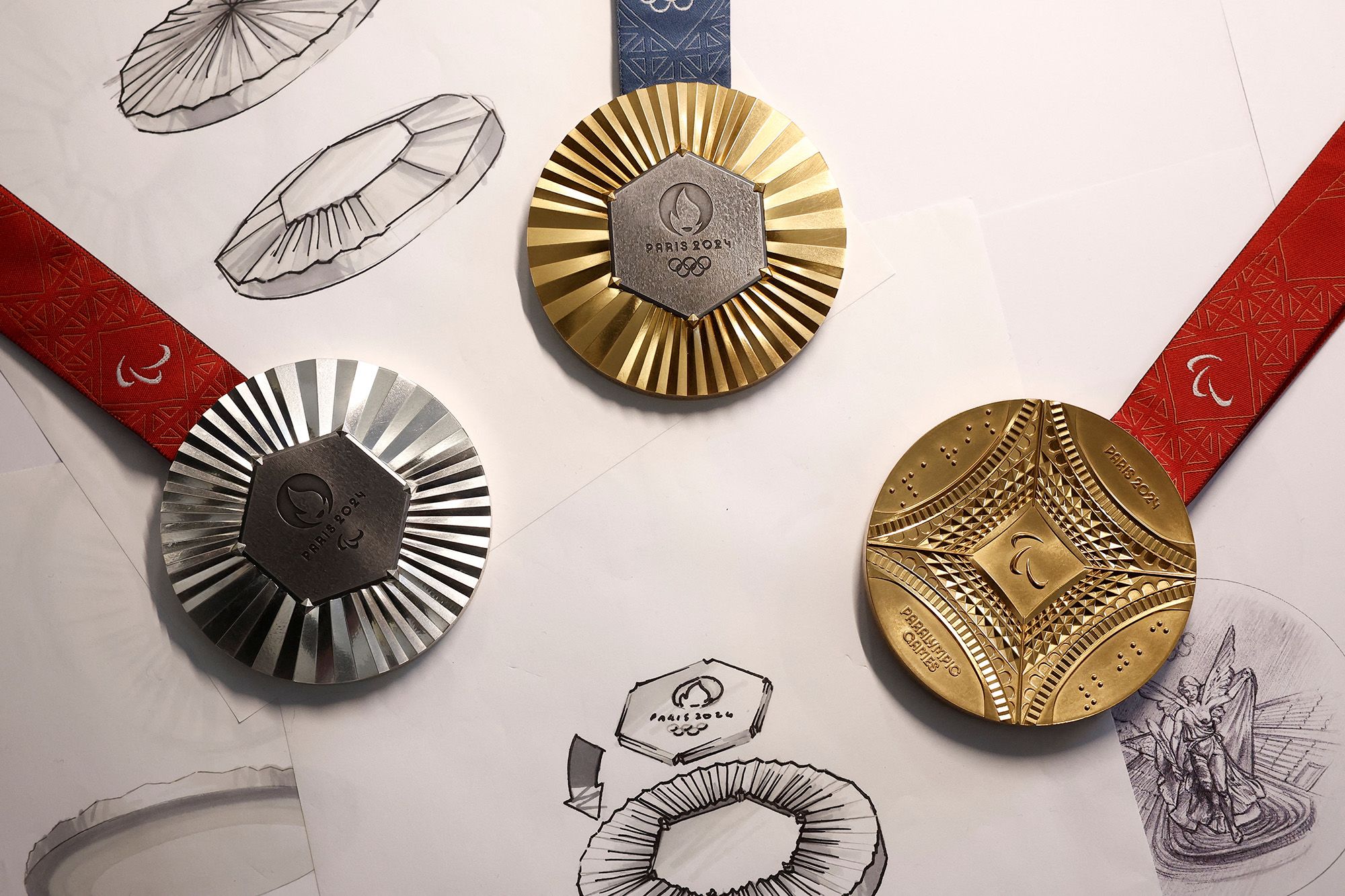This year’s Olympic medals in Paris not only draw inspiration from the Eiffel Tower but also contain an original piece of the iconic 19th-century landmark.

Revealing the designs on Thursday, Games organizers announced that ironwork removed from the structure during earlier renovations had been repurposed to create the medals’ hexagonal centerpiece. This decision aims to provide successful athletes with “veritable pieces of the history of Paris” to take home with them.
French jeweler Chaumet oversaw the design process, with their parent company LVMH signing a significant sponsorship deal with Paris 2024 last summer. Similar to designs since the 2004 Athens Games, the reverse of the Olympics medal features an image of the Greek goddess of victory, Nike. The Paralympics medal showcases a graphical representation of the Eiffel Tower, as seen from below.
According to a press release, “certain metallic elements” were extracted from the landmark during renovation work in the 20th century and have been carefully preserved since then. The iron pieces, cleaned of the Eiffel Tower’s distinctive dark brown paint, were cut into hexagons and embossed with the Paris 2024 logo.
The hexagonal centerpiece is secured using a “claw” setting, a technique typically employed to secure gems in jewelry. Speaking to CNN at Chaumet’s Paris atelier before the unveiling, Clémentine Massonnat-Schaller, the luxury house’s creative director, stated that the design aimed to highlight the hexagonal centerpiece “like a precious stone.”
While the Eiffel Tower served as the primary inspiration, Massonnat-Schaller noted that Chaumet also drew from its own archives, particularly its history of crafting jewel-encrusted tiaras. This influence is evident in the lines resembling rays of sunlight emanating from the medals’ center.
In a departure from previous years, both the Olympic and Paralympic medals share one face. Paris 2024 President Tony Estanguet described this decision as a “coming together” of the two events.
Last July, Olympics organizers revealed that the Olympic torch would be the first in Games history to be used for both the Olympics and Paralympics. Designed by French designer Mathieu Lehanneur, the torch features a ripple effect evoking moving water and is made entirely from recycled steel.
The unveiling of the torch followed shortly after LVMH announced its deal to become the Games’ “Premium Partner.” Other brands under the conglomerate, such as Louis Vuitton and Dior, are expected to have a visible presence at the Games, alongside the LVMH-owned Champagne producer Moët Hennessy.

